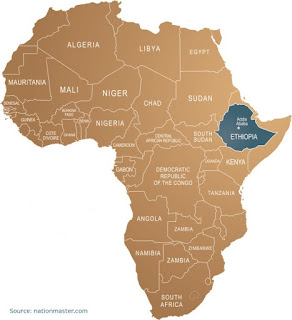New Year New Ideas
I have come to realise that whilst I may have achieved one of my aims of this blog, to highlight that Africa isn’t a singular arid continent, I have failed to offer a suitable strategy for reducing the chronic water and food problems within Ethiopia. These problems are not unique and can be seen across Africa, however the solutions required are varied. It is evident that substantial water investments in agriculture are needed to improve the current situation, but I fear that my focus on groundwater potential and surface water irrigation in Egypt may have been misguided. Whilst irrigation from surface water and groundwater both offer valid ways forward for increasing agricultural yield, as it currently stands, Ethiopia remains one of the poorest countries in Africa with a heavy reliance on food assistance. Therefore, as I discovered in my last post, Ethiopia is unlikely to have the capacity for such large scale developments and rain-fed agriculture is expected to remain the dominant source of food production. Rather than giving up hope, however, it seems appropriate that as the majority of Ethiopia’s population will continue to rely on rain-fed agriculture then approaches involving this livelihood strategy would perhaps be more successful.
Rain-fed agriculture uses rainfall which has infiltrated the subsurface and formed soil moisture in the root zone (this is the green water I’ve referred to previously). Unfortunately, this type of crop production generates lower yields than irrigated systems, yielding an average of 1.5 tonnes per hectare rather than 3.1 tonnes per hectare in developing countries. This is not necessarily due to a lack of rainfall and soil moisture, but rather is a result of inefficient management of water, soil and crops. Consequently, Ethiopia is achieving lower than 35% of potentially attainable yields. Whilst this is poor, it reveals a large untapped potential for increasing food production if crop yields from rain-fed agriculture can be improved.
It is estimated that less than 30% of the rainfall received by Sub-Saharan Africa, including Ethiopia, is used by crops through productive transpiration. The ‘drought’ induced crop failures that frequently affect Ethiopia could therefore be prevented or reduced through improved farm-level water management. Whilst there is a lack of policies surrounding rain-fed agriculture, there are broadly two strategies that can be followed for increasing rain-fed crop yields. The first focuses on the capture of rainfall and allowing it over time to filter down into the root zone; whilst the second focuses on improving the usage efficiency of the available water. Conservation agriculture utilises both these approaches, establishing in-situ water harvesting techniques that, as much as possible, avoids the disturbance of the soil. This can include mulching, the ripping of the soil only where seeding will take place, direct planting and deep ripping to break down hard layers of the subsurface. Together, they increase the moisture retention of the soil and surface crops. When these techniques were trialled within Ethiopia, the areas tested reported a 24% increase in yields when compared to conventional ploughing methods.
Evidently, the importance of improving rain-fed agriculture as a strategy for achieving food security within Ethiopia needs more recognition. However, much of the focus within water resources management remains firmly on the management of blue water resources for irrigation, which I have also focused on in recent posts. The exclusion of rain-fed techniques in water management is often justified by the ‘marginal’ potential for improvements and the absolute water scarcity in ‘arid’ areas. If we turned our attention to improving the systems that are likely to remain in place for some time (rain-fed agriculture), then we can perhaps reach a more appropriate approach to water management. This is not to say that irrigation is not important. Indeed irrigation from ex-situ water harvesting systems could allow Ethiopian agriculture to bridge dry spells and provide enough water to sustain a harvest, thus reducing the risks inherent within rain-fed agriculture. Yet, by dismantling the anthropogenic divide between irrigated and rain-fed agriculture, we could reach a more connected view of water management. One which improves the efficiency of rain-fed techniques by targeting the non-productive water flows, whilst concurrently tackling the dangers of such techniques by introducing irrigation of some form. This is particularly important in face of climate fluctuations that have often, as of yet, been difficult to adapt to.
I hope I have demonstrated here that whilst the groundwater and surface water irrigation I’ve looked at offer valuable opportunities for certain nations to increase their food production, there is no blanket solution for all countries across Africa. This is true of Ethiopia, which has struggled with effective water management and could perhaps do well from exploring a more integrated, small-scale approach, which aims to to upgrade and supplement current practices.



Comments
Post a Comment